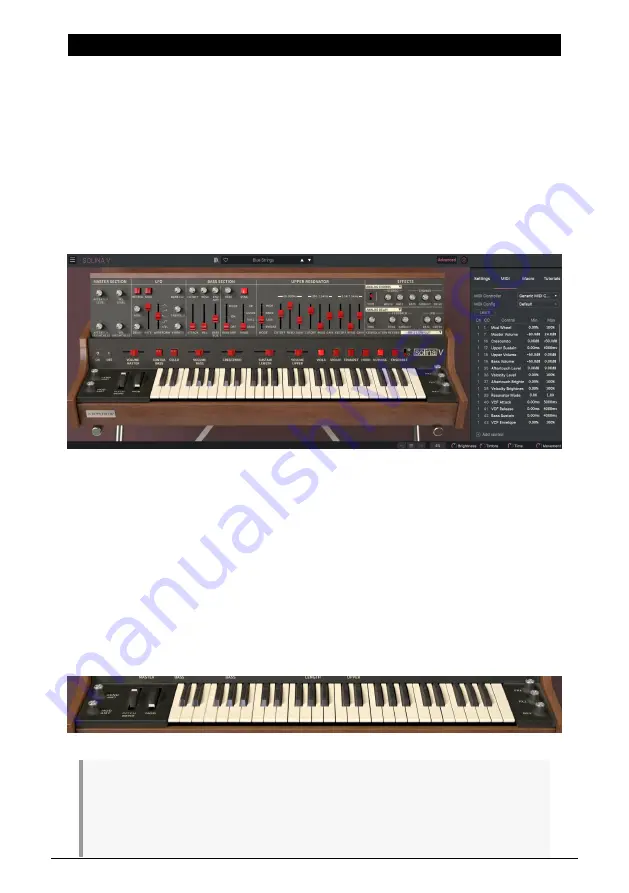
3. THE USER INTERFACE
Solina V combines the rich sound of the original Solina with a wide variety of extra features
not available on the vintage hardware. They're not hard to use, but there are a lot of them –
so in this chapter we’ll make sure you know what each one does. We think you’ll be amazed
by the huge range of sounds that can be made with this instrument.
While Solina V is very flexible, there’s nothing complicated about it. That will always be the
main focus of every Arturia product: to unleash your creativity while remaining easy to use.
Before we do anything else, let's take a look at the whole picture: a bird's eye view of the
Solina V interface.
3.1. Overview
The Solina V interface is dominated by the virtual instrument itself, but we also need to learn
about the functions surrounding it:
1. The Upper Toolbar:
This is where you access global settings, work with presets, access
the Advanced features of Solina V, and open the Side Panel (see below).
2. The Main Panel:
Here is where you will likely spend most of your time when playing with
Solina V. It contains a detailed reproduction of the original Solina front panel, with all of the
original hardware's controls (plus a few extras). We will go over this panel in the
section of this guide. Clicking on the lid reveals many more features that we'll cover in
the
section later on.
The
virtual keyboard
in the Main Panel lets you play a sound without an external MIDI
device. Just click on a virtual key to hear the corresponding note, or drag the cursor across
the keys to hear a glissando.
♪
Your computer's keyboard can also play Solina V. The top row of letters acts as the black keys on
a piano keyboard, the next row of letters acts as the white keys, and the first two keys on the bottom
row act as octave shift keys, down/up. Depending on your language, the actual keys may be different
– for example, on an English QWERTY keyboard, the octave down key is Z, but on a French AZERTY
keyboard it's W.
13
Arturia - User Manual Solina V - The User Interface






























